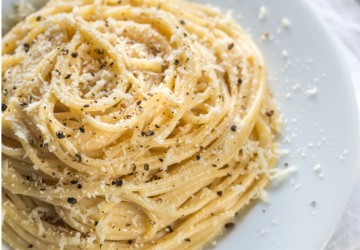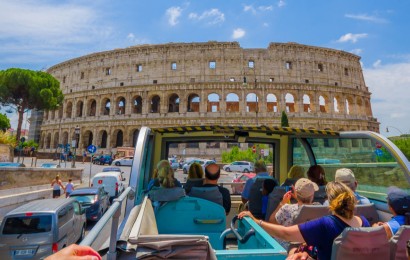What is cacio e pepe?
It is now known, that the tradition of Roman cuisine is characterized by four dishes: carbonara, amatriciana, gricia and cacio and pepper. Dishes "poor", simple, but rich in history and goodness.
The cacio e pepe is one of the most famous Roman recipes, consisting of three essential ingredients: pasta, pecorino cheese and pepper.
The origins of the cacio e pepe
The history of this dish dates back to the centuries during which transhumance took place. The shepherds of the Roman countryside made long movements of the flock, carrying with them during the journey a bag rich in caloric and long-keeping food, such as dried tomatoes, pillow, and spaghetti prepared by hand with water, salt and flour.
Over the years, the tradition spread throughout the Lazio countryside, up to the mountains of Abruzzo and Umbria, thus constituting a dish of the typical tradition not only to be tasted in the family, but also in the taverns and immediately enjoying a wide success. In the first restaurants where it began to be served, the cheese and pepper was cooked very dry, to ensure that customers were increasingly thirsty and therefore, ordered more wine.
The Cacio e Pepe, typically Roman, is the most famous, and a must for tourists from all over the world who come to visit the eternal city. Rigatoni, tonnarelli, mezze maniche and spaghetti, are reformulated by Roman chefs, between tradition and originality, of which the inevitable ingredient is pecorino.
But what is meant by cheese?
The cheese is not just any cheese but refers to the Pecorino Romano DOP. But of the same excellent quality, are also the pecorino Sardo, Umbro and Abruzzese. In addition, for an excellent yield of the ingredient, it is necessary that its maturation is at least 8 months, so that the cheese, can be easily grated and release all its most intense flavor.
The essential ingredients of the original recipe of the cheese and pepper are 3:
- Pasta (usually tonnarelli, spaghetti, bucatini);
- Pecorino Romano DOP;
- Black pepper in grains
Despite the simplicity of the ingredients, its preparation is not simple indeed it is quite difficult to make it creamy and without lumps.
Want to know the dishes of the Roman tradition? Discover our guide to the 10 typical Roman dishes to try. In addition, with our Destination Eataly tour you can discover an alternative way to experience and enjoy Rome, admiring its timeless beauty and savoring the typical dishes of the Italian culinary tradition.
How to make cheese and pepper?
Let’s see some tips to prepare the cacio and pepper to perfection and balance the ingredients correctly.
Cook the pasta in slightly salted water (preferably the home made tonnarelli) and wait for the minutes necessary for cooking. In the meantime you can proceed to the preparation of the cream.
--> The secret is to prepare the cream separately to ensure that once it is combined with the dough creates that thick and creamy texture.
In a boule will be inserted the grated pecorino cheese and a bit of cooking water mixing with a whisk to create a creamy mix. The pecorino cheese should not be too seasoned in order to allow the formation of the cremine. It is preferable that the pecorino cheese is Roman PDO because this quality melts more easily in hot water and binds to the starch of the pasta.

